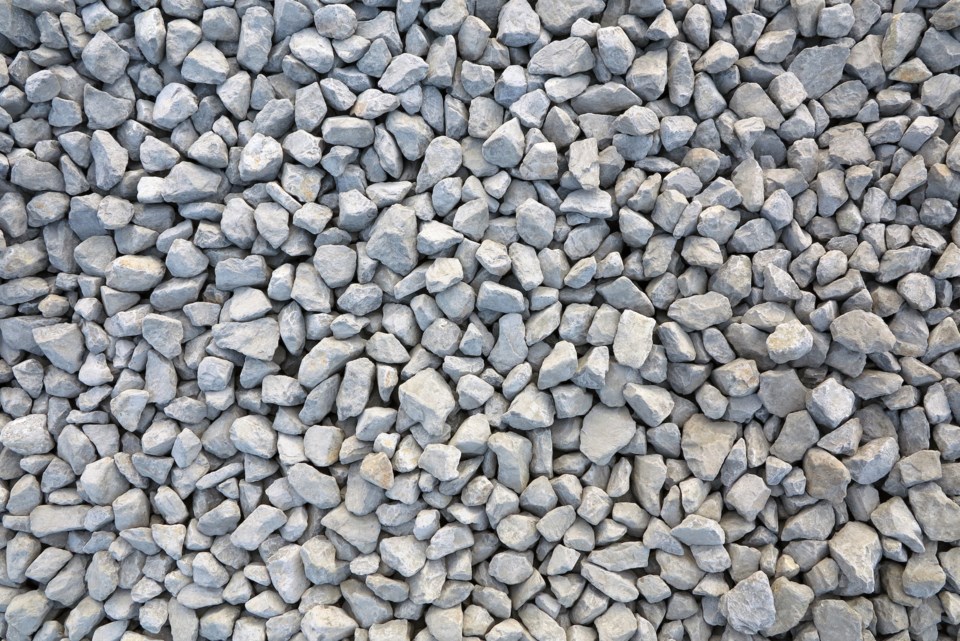OrilliaMatters welcomes letters to the editor at [email protected] or via the website. Please include your full name, daytime phone number and address (for verification of authorship, not publication). The following letter from the president of Reform Gravel Mining Coalition, Doug Tripp, is in response to 'Rock on: Simcoe County leads the way in aggregate production,' published Feb. 3.
Mike McSweeney, the executive director of The Ontario Sand Stone and Gravel Association, offers up the standard industry spin on gravel mining in his comments quoted in this article. There are numerous concerns that need to be raised, many of which are voiced by Doug Varty in part 2 of the series.
First, in Oro Medonte and Springwater, as in many other regions of Southern Ontario, there are conflicting priorities between the critical need for water protection and the availability of aggregate for extraction.
The Oro Moraine, like the Oak Ridges, Paris-Galt, Waterloo, Orangeville, and several other moraines, plays a critical role in purifying and protecting the groundwater aquifers that directly or indirectly supply potable water to the region. The mechanism by which water purification occurs uses the very feature that the gravel mining industry exploits for aggregate extraction — the sand, stone and rock deposited in these areas millions of years ago. In a time of undeniable and critical climate change, water protection needs to take precedence over gravel mining.
It is alarming to note the rate at which Simcoe County and the Oro Moraine have lost the materials that are key components of the county’s water supply — 128 million metric tonnes in the past 10 years, 15.2 million metric tonnes in 2022 alone. The industry does not speak to the permanent impact of its removal of this material, only repeatedly asserting the myth that gravel mining is benign when it comes to water.
Doug Varty describes the impact of heavy truck aggregate haulage on the back roads of Oro Medonte. The standard industry talking point is to justify the location of pits and quarries with the “close to market” argument, supposedly as a strategy to control greenhouse gas (GHG) emissions.
This assertion is rich when we realize that if the concrete and cement industries on a global scale that are part and parcel of the gravel mining business were a country, it would be the third largest GHG emitter in the world. In Ontario’s uncoordinated gravel mining industry, competing companies typically use their own aggregate sources to deliver product to construction sites, regardless of the proximity or lack of same of the pit to the project.
Then there is the question of supply and demand. McSweeney cites the Ontario home-building target to assert that 375 million metric tonnes of aggregate will be needed over the next eight years, or about 47 million tonnes per year. Although referenced as evidence of increased demand for aggregates, this is really business as usual for the past three decades.
Despite 45 per cent growth in Ontario’s population over the last 30 years and all of the infrastructure development that has accompanied it, total aggregate production has averaged about 160 million tonnes per year with no discernible trend up or down over that period. History demonstrates that it is a myth that the industry perpetuates that whatever growth, housing needs, and infrastructure development are projected for the future will significantly increase the need for aggregate over the business-as-usual level.
Furthermore, the total absence of transparency on the part of the gravel mining industry and government regarding the current capacity of the industry in Ontario in terms of reserves and production levels, prevents the public from making informed judgments on the supposed need for more pits and quarries. This point is well made by James Seeley, the Mayor of Puslinch and chair of TAPMO.
Aggregate quarries are essentially open pit mines but differ significantly from other mining operations in the absence of disclosure of their reserves. Under National Instrument 43-101 - Standards of Disclosure for Mineral Projects, other mining companies are obliged to report their reserves.
However, what we do know is that the approximately 6,000 pits and quarries have licensed extraction capacity of more than two billion tonnes per year or 13 times the average annual consumption in Ontario. McSweeney calls for the release of “more and better information about supply and demand,” perhaps the only point he makes that we can agree with provided it includes information about reserves.
It is not only Mayor Seeley who is concerned about the reliability of industry data. The recently released Auditor General Value for Money Audit Report on the aggregate industry, among many criticisms of the industry and related government practices, attributes the lack of public trust in the industry to their failure to provide accurate supply and demand data.
Clearly aggregate is an important commodity in meeting the ongoing development needs of the province. But it is a finite resource that belongs to the citizens of Ontario and must be used wisely to ensure that supplies are conserved for future generations. Furthermore, food-producing agricultural lands, water resources and other natural assets are essential for life as we know it and must be given precedence over gravel mining.
Doug Tripp
President, Reform Gravel Mining Coalition



